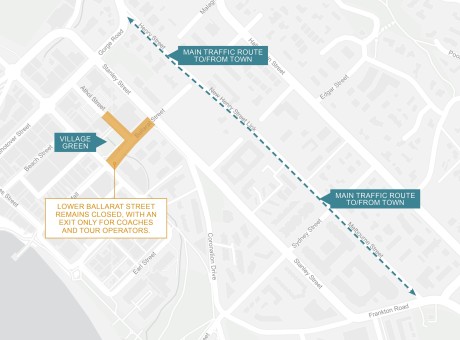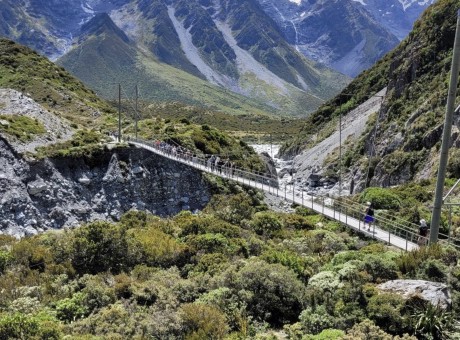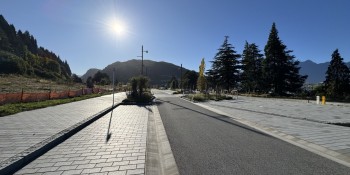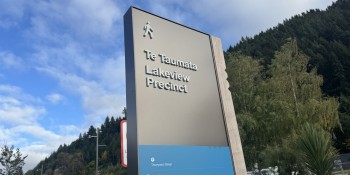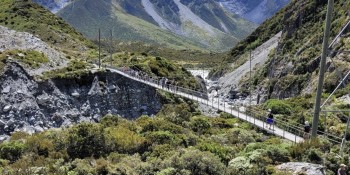$100m in damages to Glenorchy homes in big shake: ORC report

A major rupture of the South Island's alpine fault would cause more than $100 million-worth of damage to households in Glenorchy, according to a latest report commissioned by the Otago Regional Council.
The report by Beca Group Limited looks at the likely socio-economic impacts of three natural hazard events if the community continues with status quo management of the risks, and it was presented to regional councillors last week.
In additional to damage to individual households, the report says repair and replacement of roading infrastructure would costs between $700,000 and $2.1 million, but warns the figure "may be higher given the challenging terrain and if access via Glenorchy-Queenstown Road is also impacted".
Clean-up from liquefaction, which an earlier report has already revealed Glenorchy's vulnerability to, would cost approximately $200,000, while even one to two weeks of no tourism would cost between $250,000 and $500,000, the report says.
Otago Regional Council’s natural hazards manager Jean-Luc Payan says the socio-economic assessment informs the Head of Lake Whakatipu Natural Hazards Adaptation Programme, which was initiated, according to the council, because the area faces a complex mix of natural hazards, some of which are expected to increase in likelihood and severity.
Mr Payan says the study "highlights the depth of local knowledge and resources in the community, and an already high-level of resilience, as well as some vulnerabilities".
He says adaptation planning is "community-centred", and the report will help both the council and community make more informed decisions about how to adapt.
The latest report was requested by the community itself, who wanted to provide a social and economic context to earlier engineering reports.
At the time, Glenorchy Community Association chair John Glover asked councillors how they could expect to weigh up hazard reduction options - all of which come with universally hefty price tags - without seeking to understand what is at stake for the community.
Mr Glover says, "It’s good to see this study capture and collate the lived experiences and knowledge base across the community at the head of the lake".
"We’re working as a community on a number of fronts to increase our readiness, resilience, and subsequent response to the natural hazards that all of us living here are very much aware of."
To compile the report, a number of interviews and focus groups were undertaken with stakeholders, residents and businesses, and they were followed up with an online residents and businesses survey at the end of last year.
The report identifies the community as "well-functioning and motivated", one where everyone "chips in in difficult times".
"Most respondents showed a high level of preparedness and tolerance of natural hazard events," the report says.
"However, newcomers to the community and visitors may not be as resilient."
In addition to an earthquake scenario, the report imagines two separate types of flooding events.
A major flood is anticipated to damage 40 dwellings - 20 in locations where floodwaters are expected to be more than half a metre deep.
"Based on 10 houses being impacted to the extent of requiring a retreat and the median house price in Glenorchy being $900,000, the cost would exceed $4.5 million," the report says.
"The occupants of the remaining 30 houses would likely experience temporary access restrictions, minor repairs, and debris, however they are likely to be able to return to their homes."
In this scenario, the roading repair bill is put at $700,000, while a one-month closure of the road to Kinloch would cost businesses $80,000, a one-month closure of the road to and from the Routeburn Track, between $375,000 and $425,000, and a one to two-week closure of the Queenstown to Glenorchy Road, between $250,000 and $500,000.
Over a three month period post flood, economic losses due to a drop in tourist numbers are estimated to be as much as $1.5 million, the report says.
The council says the second phase of the socio-economic impact assessment will focus on screening a long list of possible adaptation responses for socio-economic risks - and opportunities.
Council staff as well as representatives of Beca will share findings of the report in an online presentation and Q&A session scheduled for Wednesday, May 22, at 7pm.







